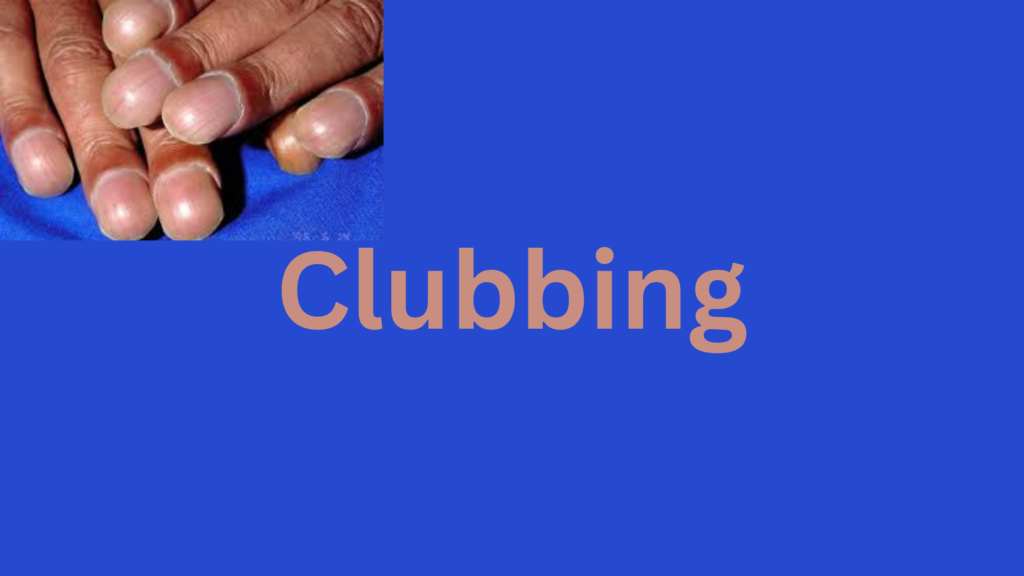Clubbing is a physical sign characterized by bulbous enlargement of the fingertips or toes and changes in the angle where the nail meets the cuticle. It often indicates underlying systemic diseases, especially involving the lungs or heart.
🔍 Features of Clubbing
- Rounded, enlarged fingertips or toes (“drumstick” appearance)
- Nail beds become soft and spongy
- Increased nail curvature both longitudinally and transversely
- Loss of the normal angle between the nail and the nail fold (Lovibond’s angle > 180°)
- Sometimes called “watch-glass nails” or “parrot-beak nails”
⚠️ Causes of Clubbing
| Category | Examples |
|---|---|
| Pulmonary Diseases | Lung cancer, cystic fibrosis, bronchiectasis, interstitial lung disease, chronic lung infections |
| Cardiac Diseases | Cyanotic congenital heart disease, infective endocarditis |
| Gastrointestinal Diseases | Inflammatory bowel disease, liver cirrhosis, celiac disease |
| Others | Hyperthyroidism, familial/genetic clubbing |
🔍 Signs and Symptoms
- Enlargement and rounding of fingertips
- Thickening of soft tissue beneath the nail bed
- May be painless and noticed incidentally
- Sometimes associated with other symptoms of underlying disease (cough, chest pain, cyanosis)
🛠️ Diagnosis
- Clinical examination of nails and fingers
- Assess for underlying diseases with relevant investigations (chest X-ray, echocardiogram, blood tests)
- Schamroth’s window test: loss of normal diamond-shaped space between nail beds of opposing fingers when placed back-to-back
🛡️ Management
- Treat the underlying disease causing clubbing
- No direct treatment for clubbing itself
- Monitor progression as part of systemic illness evaluation
